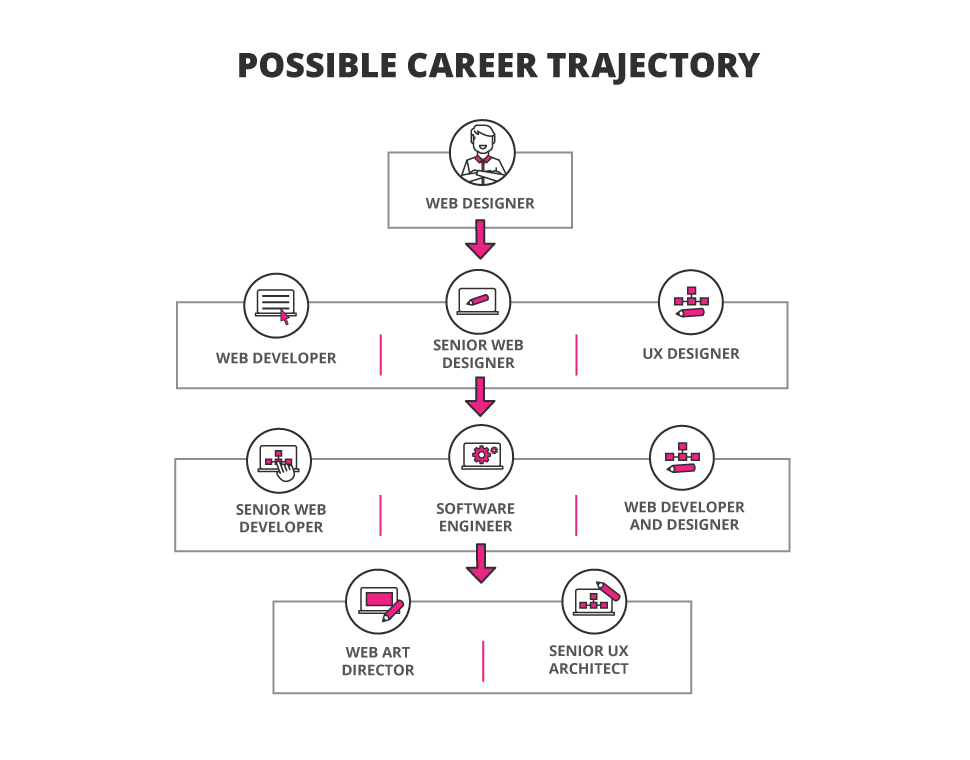Table Of Content

The first step to becoming a Web Designer is learning web design theory. There are foundational principles for creating good websites, including user experience, structure, and color theory. A baccalaureate degree from an accredited college or university and two years of satisfactory full-time experience in city planning; or 2. A satisfactory combination of education and/or experience that is equivalent to “1"" above. Whether you want to become a web designer for fun or you want to embark on a complete career change, you’re in luck. There are so many incredible tips, tricks, and resources available online that can help you jump-start your journey toward becoming a web designer with a killer portfolio.
Create a portfolio
New graduates can use their professional networks to find jobs as well. Even connections who do not work in web design may be able to help since most organizations need websites. Web designers who excel at the technical aspects of their jobs may enjoy computer information and systems (CIS).

Portfolio Resources
Try creating a blog or website based on one of your personal interests. HTML is the language used to structure the content on a web page, which ties in directly with the hierarchical elements you’ll need to know to create good layouts. In short, user experience is about making a website as painless and easy to use as possible for everyone who visits it. In short, every website you visit and every app you use on the internet has a web designer’s fingerprints on it.
How to become a web designer
Still, you do need to show that you’ve designed different types of sites with drastically different esthetics. When you’re interviewing, customize your portfolio to showcase work that fits the company’s look and feel. To become a Web Designer, you must have both the technical prowess needed to make functional websites as well as the artistic ability and design sensibility to create an experience that users will love.
However, a four-year degree isn’t the only path to this creative career, obtaining certifications is another option. Let’s take a closer look at both degree programs and certifications. If you’re working on a major project with multiple stakeholders and a team of designers, you’ll likely collaborate with developers to bring your designs to life.
Still building your portfolio?
In-house Web Designers are the only type who don’t have to worry about pleasing clients, though of course their sites will have many stakeholders nevertheless. On the downside, they don’t get the same variety enjoyed by other types of designers. Typically used mainly for user interface designs, Sketch is an essential tool for creating interfaces and prototyping. When you’re working with vector drawings and graphics, Sketch can make life a lot easier. The longtime leader of all web design skills hasn’t lost any of its popularity.
Webflow allows designers to build custom websites, complete with HTML, CSS, and JavaScript, all without actually having to write code. For instance, you might find a Facebook group dedicated to your favorite website design software. Discussions would focus around troubleshooting errors, improving your process, and learning new strategies. There are also web design industry groups focused on gathering to share stories, communicate about clients, and trade information about open gigs. You’ll find plentiful resources on website coding on the same platforms that cover web design theory.
Average Salary of Web Designers by Job Level
10 Coding Skills Can Accelerate Your Product Design Career - Analytics Insight
10 Coding Skills Can Accelerate Your Product Design Career.
Posted: Fri, 16 Feb 2024 08:00:00 GMT [source]
These professionals need creative, analytical, communication, and interpersonal skills. A designer doesn’t write the code to make a site function, but it doesn’t hurt to know a little about HTML or CSS to make small tweaks to a site. With a basic understanding, you’ll be able to manipulate templates, enhance fonts, or adjust the placements of objects easier. A designer needs the ability to talk with a company about what they want, ask questions about the intended audience, and convey their ideas for an effective site. Being able to communicate is just the start, companies want a responsive designer too.
There are also many transferable skills that you might not realize will help you as a Web Designer. Empathy, for example, is critical to understanding how the users of your product or service think and act in a given situation. Collaboration, too, is key in many roles, but especially for most Web Designers. A successful Web Designer must excel at interaction with various teams, actively listening, accepting feedback, brainstorming, and more. All require a positive personality and a willingness to work well in a team setting.
In fact, pretty much anybody can become a web designer with the right amount of experience, hard work, and access to great resources. Without a wide pool of excellent and talented web designers, many of these websites wouldn’t function or look the way they do. You’ll also find that many of the resources you use to study web design also offer training on soft skills with exercises to apply them in your day-to-day work.
To be successful, you’ll need to have programming skills that relate to web design in some capacity. As the web design industry continues to grow, there will always be a need to top up your training and learn more about how UX changes in terms of trends. What users are looking for in UX one year may be completely different the next year with changes in culture and technology.

One way for learners to find web design jobs after college is to pursue internships during school. These positions can help students make connections and build portfolios. These recruitment events allow applicants to connect with several employers at once.
Since freelancer salaries work differently than their employee colleagues, the BLS does not report data on freelancers. However, self-employed web designers experience high earning potential, due to their ability to take on as many clients as they want. Some web designers, especially freelancers, live in one region and find clients in others.

No comments:
Post a Comment